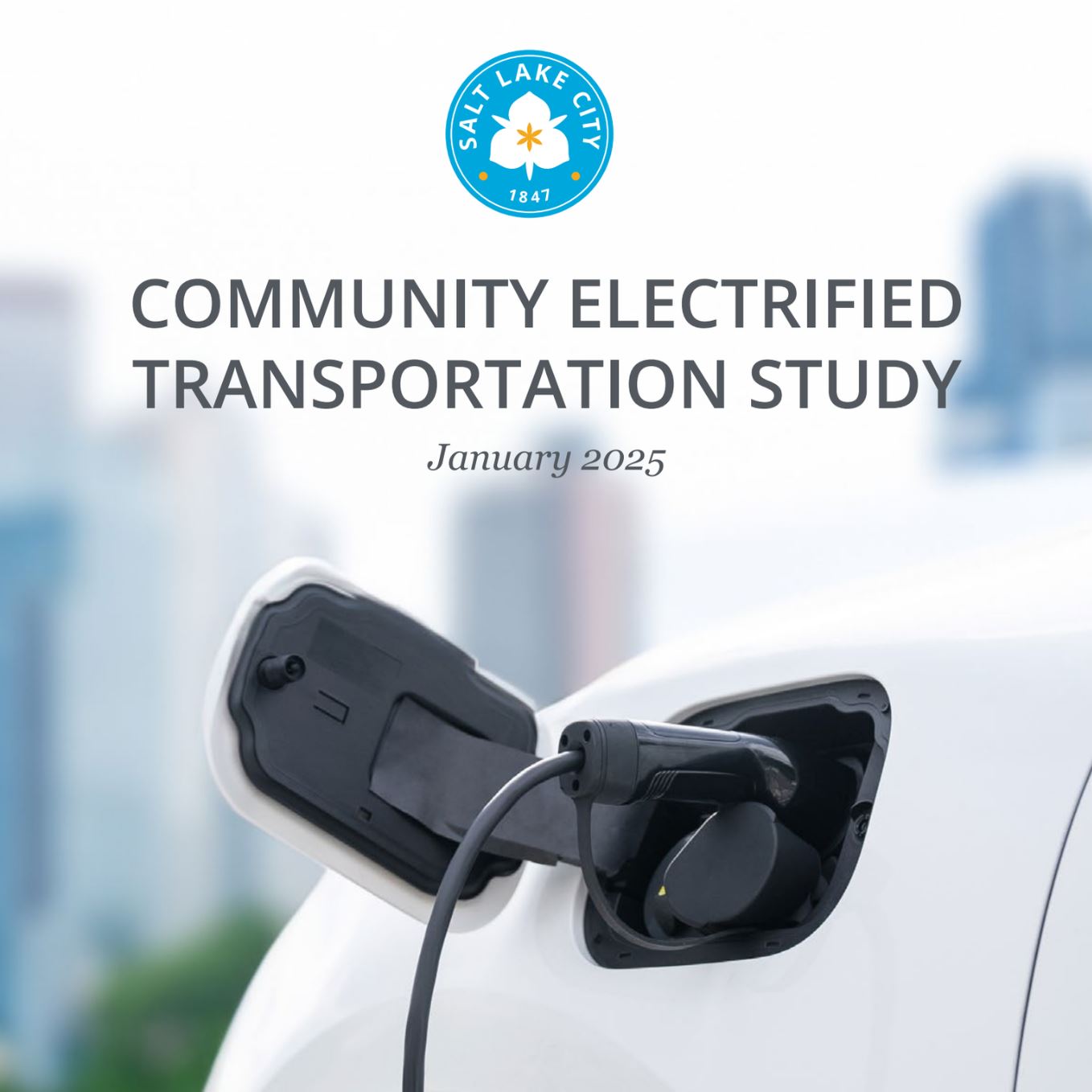
New Report Out! ⚡🚗 🚚
We are excited to share Salt Lake City’s recently completed Community Electrified Transportation Study. The City initiated the study in 2023 and it was completed in January 2025 as a tool to inform an equitable transition to electrified transportation as part of our larger climate and air quality goals.
Why electric vehicles?
Salt Lake City faces significant and unique air quality challenges. In the winter, the Wasatch Front’s geography leads to periodic temperature inversions (cold air getting trapped underneath a layer of warm air) which acts like a “lid” on the Salt Lake Valley—causing particulate pollution to increase. In the summer, pollution from cars, industry, and a multitude of chemical products, combined with high temperatures and bright sunshine, lead to harmful ozone levels.
About 39% of pollution along the Wasatch Front comes from internal combustion engine vehicles. Transitioning the transportation sector to clean energy technologies, including electric vehicles (EVs), will provide a range of benefits including improved air quality, reduced carbon emissions, and enhanced public health.
It’s not just about EV’s though.
In addition to personal vehicles, the study also highlights the opportunities to support electrified transit, micro-mobility, rideshare and ride hailing, and medium- and heavy-duty fleets. Just as importantly, the Community Electrified Transportation Study is a complement to the newly-adopted Salt Lake City Transportation Master Plan, which emphasizes the importance of building a city and transportation network that does not rely on single-occupancy vehicles.
Why is this study important? (Read: Why are we excited 🤓)
Ultimately, electrifying transportation is a key strategy to achieving our climate goals, in tandem with mode-shifting priorities. In fact, Salt Lake City will not come close to meeting our climate goals without focusing aggressively on both of these pillars in our overall transportation planning.
How will the study be used?
This study will inform discussion of a multi-year strategy for infrastructure deployment, outreach, policies, and programs that encourage equitable advancement of electrified transportation (while also accounting for population growth and an increase in higher-density, walkable neighborhoods). It is estimated that more than 80% of charging happens at home, but it will also be critical to develop more workplace and public charging, particularly to support those who cannot charge at home (i.e. some renters and multifamily residents, and those whose parking arrangements do not allow for it).
See page 31 of the PDF for a quick summary of priority areas identified.
What’s next?
We will be officially transmitting this study to the City Council soon for policy direction to identify priorities. From there, next steps can be identified to implement solutions. In the meantime, visit our website to read the Community Electrified Transportation Study and learn more about other work we’re doing.
Bonus Report!
We also recently completed a 306-page assessment (PDF) for Salt Lake City’s own internal fleet. We continue working towards transitioning as many vehicles as possible to all-electric — and we need to prioritize infrastructure improvements to continue down that path.
Learn more about electrified transportation in SLC on our website.
